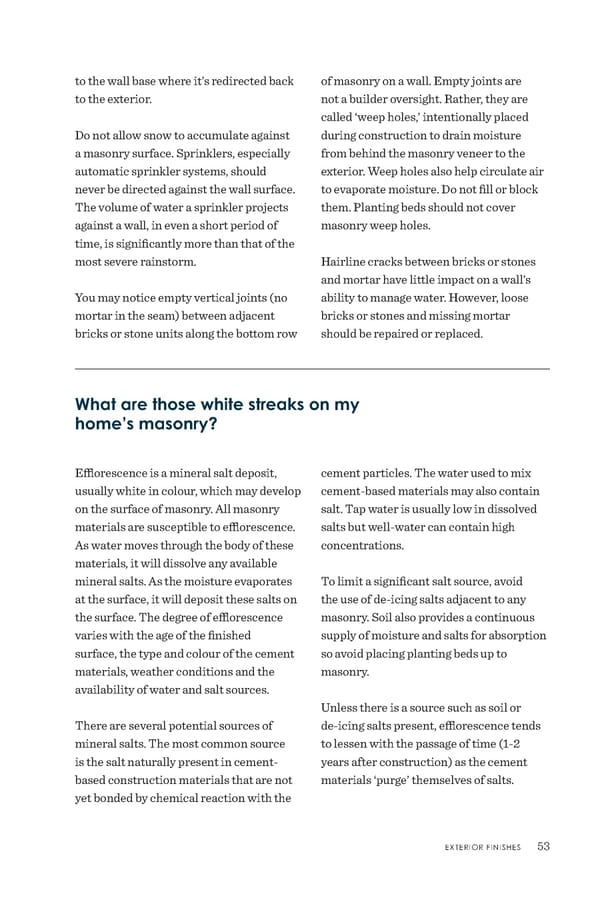Efflorescence is a mineral salt deposit, usually white in colour, which may develop on the surface of masonry. All masonry materials are susceptible to efflorescence. As water moves through the body of these materials, it will dissolve any available mineral salts. As the moisture evaporates at the surface, it will deposit these salts on the surface. The degree of efflorescence varies with the age of the finished surface, the type and colour of the cement materials, weather conditions and the availability of water and salt sources. There are several potential sources of mineral salts. The most common source is the salt naturally present in cement- based construction materials that are not yet bonded by chemical reaction with the cement particles. The water used to mix cement-based materials may also contain salt. Tap water is usually low in dissolved salts but well-water can contain high concentrations. To limit a significant salt source, avoid the use of de-icing salts adjacent to any masonry. Soil also provides a continuous supply of moisture and salts for absorption so avoid placing planting beds up to masonry. Unless there is a source such as soil or de-icing salts present, efflorescence tends to lessen with the passage of time (1-2 years after construction) as the cement materials ‘purge’ themselves of salts. What are those white streaks on my home’s masonry? to the wall base where it’s redirected back to the exterior. Do not allow snow to accumulate against a masonry surface. Sprinklers, especially automatic sprinkler systems, should never be directed against the wall surface. The volume of water a sprinkler projects against a wall, in even a short period of time, is significantly more than that of the most severe rainstorm. You may notice empty vertical joints (no mortar in the seam) between adjacent bricks or stone units along the bottom row of masonry on a wall. Empty joints are not a builder oversight. Rather, they are called ‘weep holes,’ intentionally placed during construction to drain moisture from behind the masonry veneer to the exterior. Weep holes also help circulate air to evaporate moisture. Do not fill or block them. Planting beds should not cover masonry weep holes. Hairline cracks between bricks or stones and mortar have little impact on a wall’s ability to manage water. However, loose bricks or stones and missing mortar should be repaired or replaced. EXTERIOR FINISHES 53
 ANHWP Care & Maintenance Guide 2022 Page 54 Page 56
ANHWP Care & Maintenance Guide 2022 Page 54 Page 56